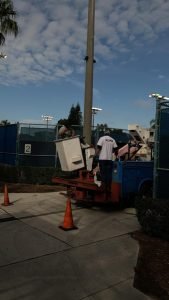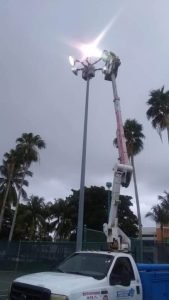Parking lots, restaurants, shopping malls, industrial sites, and residential streets all benefit greatly from the protection and security provided by light poles. IN order to keep a light pole safe and structurally sound from the effects of winds, vibration, and corrosion in a normal outdoor setting, frequent inspections and maintenance are necessary.
Why Are Light Poles Essential to Businesses?
Light poles make it simpler to maneuver through dark parking lots, walkways, and roadways, reducing the likelihood of accidents and injuries. Additionally; they deter crimes like theft and vandalism and give businesses the additional protection and security they need to draw clients after hours. Most clients will select a brilliantly lit shop over the one with inadequate lighting and burned-out or flickering lights simply because it seems safer and conveys that the owners take pride in their business.
What is involved in maintaining light poles?
A light pole’s structural integrity may be compromised over time by winds, vibration, metal fatigue, and corrosion, which raises the possibility that it will collapse due to bad weather or from an accidental impact.
Constant flexing can harm cables, creating electrical risks, and regular wear and tear can lead to the failure of lights, photosensors, or timers. Regular inspections and maintenance are essential to prevent accidents, damage to property, and operational failures. Here are some of the typical light pole maintenances you need to perform to avoid property damage, self-injuries and operational failures:
Inspecting the base of the light pole – The most important component of a light pole is its base. Welds between the base plate and the pole can fail due to winds and vibrations. If there are any cracks, flaking, or other damages, the welds should be examined and fixed as appropriate.
Inspecting fasteners – With time, screws, nuts, and bolts may become loose. To avoid tampering, every fastener needs to be examined for tightness, and nut covers, if present, should be changed.
Electrical system – To prevent shock risks and injuries, the light pole needs to be checked for stray current, flawed grounds, shorts, and other electrical issues.
Replacing bulbs – Ballasts and bulbs should be examined for proper operation, and those that are burned out or damaged should be replaced.
Testing control systems – The functionality of photosensors, timers, and other controls should be checked, and if necessary, they should be fixed or replaced.
Conclusion:
Even though a simple visual examination can be completed by you on occasion, light poles should regularly be inspected by a professional. Get in touch with a service provider that offers Light Pole Repair near me in your locality.










